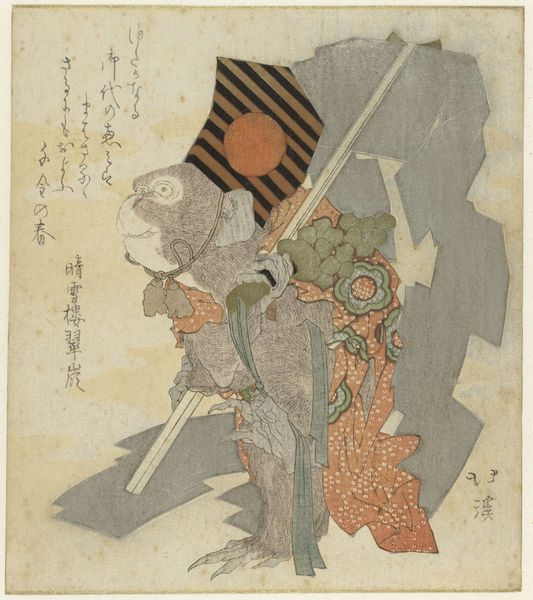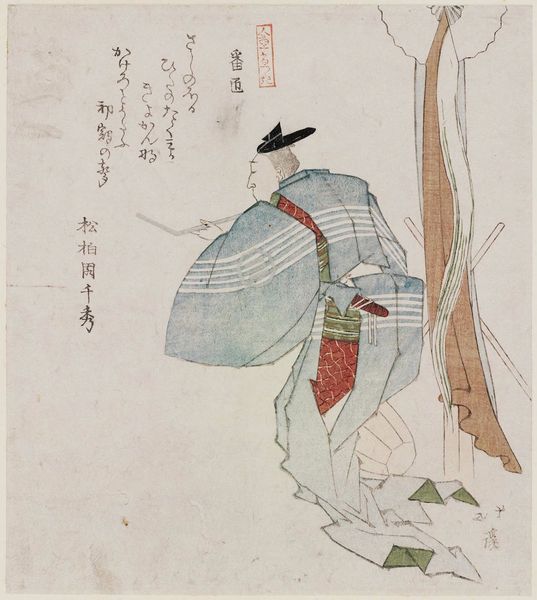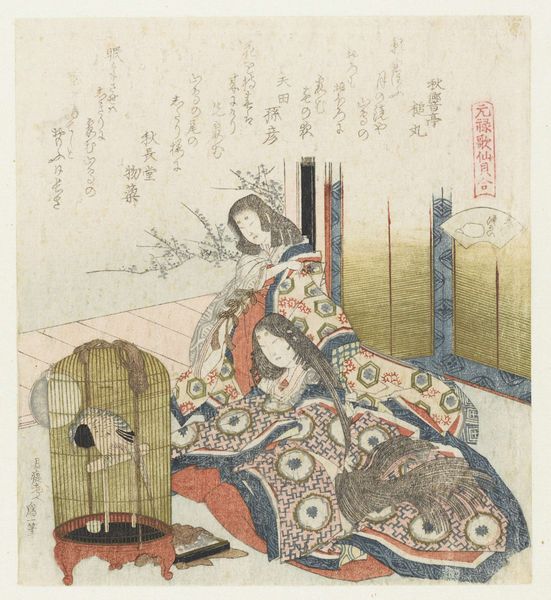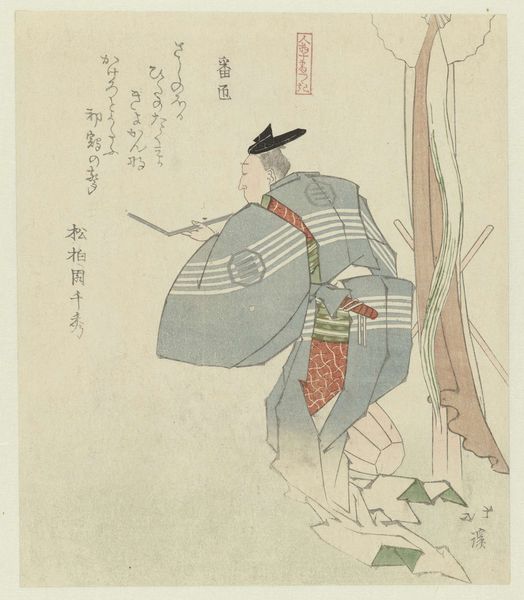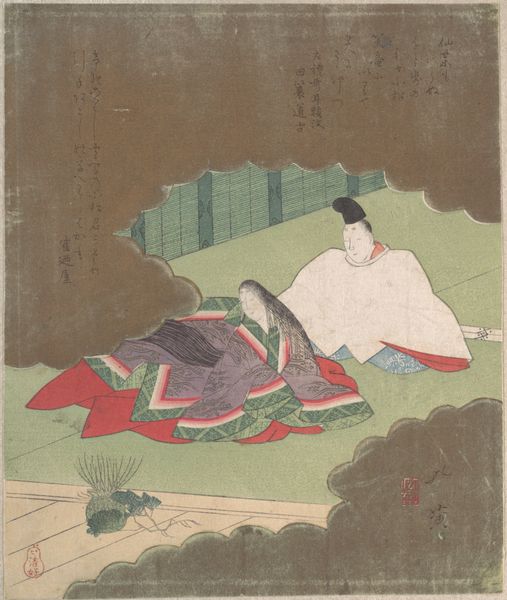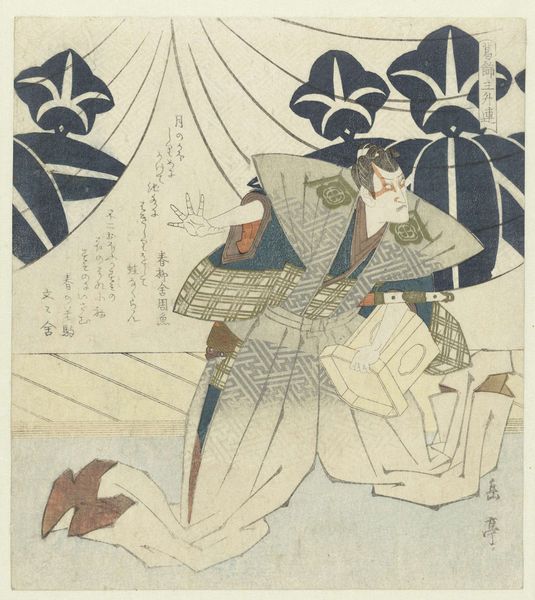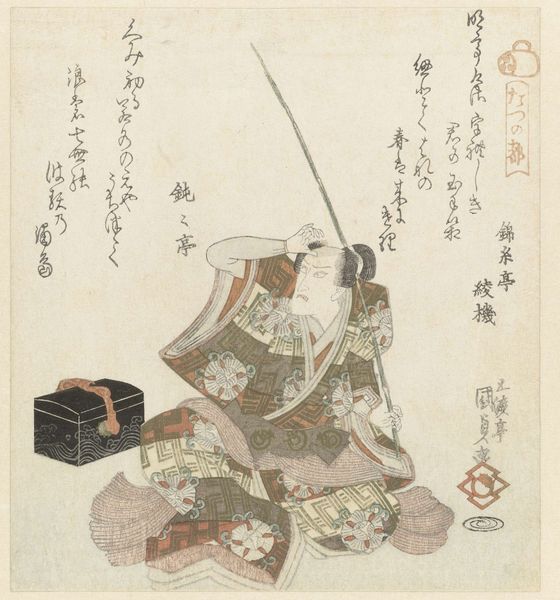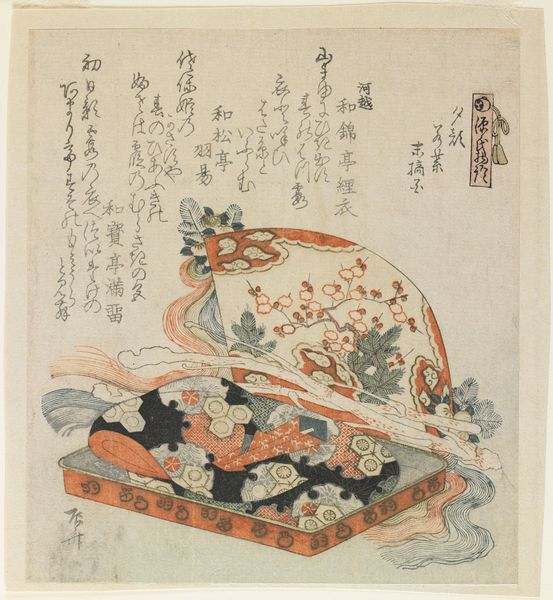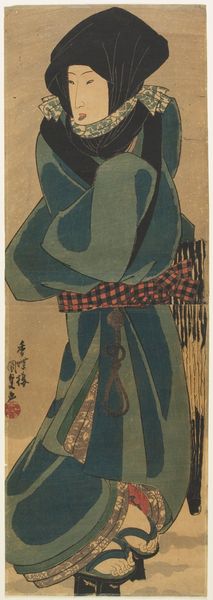
The Proper Way of Drinking New Year's Sake (Toso no miki namesomuru tei), from the series "Teaching Manners According to the Colors of the Spring (Shunshoku shitsukekata)" c. 1807
0:00
0:00
print, woodblock-print
# print
#
asian-art
#
etching
#
ukiyo-e
#
figuration
#
woodblock-print
Dimensions: 19.8 × 8.5 cm
Copyright: Public Domain
Editor: This woodblock print, "The Proper Way of Drinking New Year's Sake" by Kubo Shunman, dates from around 1807. It feels remarkably intimate, capturing a moment of ritual. What can you tell me about how this image might relate to power structures within Japanese society? Curator: Absolutely. Let's think about the "proper way" presented. Who defines that propriety, and for whom? We see a woman, presumably of high status given her elaborate garments, but her gaze is averted, downcast almost. Is she an agent or is she performing a role dictated by social expectations? Editor: That's fascinating. The title emphasizes proper behavior, but her posture seems almost submissive. Does the print offer any resistance to those societal norms? Curator: It’s subtle. Ukiyo-e prints, while seemingly documenting everyday life, were often consumed by a rising merchant class eager to emulate aristocratic culture. Shunman’s detailed depiction could be read as a critique or a celebration. We have to ask, whose gaze is centered here? The viewer's, seeking instruction or perhaps titillation? Or is Shunman subtly pointing to the constraints placed upon women within this ritualistic performance? Editor: So the act of observing itself is loaded with power dynamics. Thinking about the consumer, it adds a layer to the complexity of its cultural moment. Curator: Precisely. And consider the commodification of culture and tradition. These prints become objects within a social landscape riddled with class and gender anxieties. What do you make of the poem inscribed at the top? Editor: I confess I cannot read it, but maybe it sheds further light on the dynamics between obedience and autonomy. It could be read from either perspective. Curator: Precisely. So this piece prompts us to ask: Who benefits from such refined manners and traditions, and at what cost? Editor: I’m left thinking how deceptively simple this image is; there are such powerful and nuanced statements subtly woven within. Curator: Agreed, and I now wonder about the intended audience – what do *they* read into this scene?
Comments
No comments
Be the first to comment and join the conversation on the ultimate creative platform.


